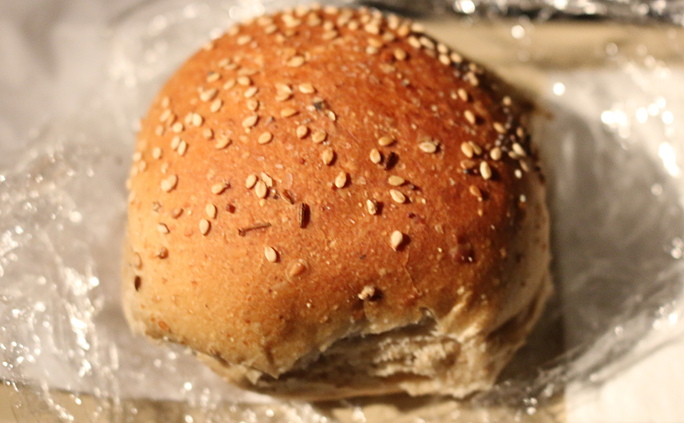Everyone likes a good meal — although the actual definition is subjective. A good meal could mean a steak which is perfectly prepared and paired with a fine wine. It could mean what is known as comfort food — such as roast beef, meat loaf, or fried chicken…
…and to at least one person, a good meal could mean a pizza from Pizza Hut.
Hey — who am I to judge?!?
Food Fraud Costs Consumers Up to $40 Billion Per Year Worldwide
Speaking of pizza, travel affords the opportunity to try out different kinds of food in regions around the world where they were either created or are popular. What pizza lover would not try a pie while in Italy? Could Alexander Bachuwa of The Points of Life ever find the perfect phở in its native Vietnam? Would a traditional bibimbap in South Korea hit the spot? How about simply a good ol’ hot dog or hamburger in the United States?
The problem is finding that authentic food. Sure, there is word of mouth upon which you can rely. Reviews of dining establishments abound. Sometimes the mere reputation of a restaurant precedes what is expected to be a memorable experience.
Authenticity has more than one definition, however, as it is not just where the food is from or how it is prepared in general; but are the ingredients used supposed to be in the food and beverages in which you are consuming?
“From olive oil that has been cut with cheaper oil to honey infused with banned antibiotics and ground coffee contaminated with corn and sawdust, the food you eat is ripe for fraud”, according to this article written by Jennifer Schlesinger and Andrea Day of CNBC. “It’s costing consumers $30 billion to $40 billion a year worldwide, according to Michigan State University’s Food Fraud Initiative.”
You read that correctly: $40 billion — with a B — per year.
Watch Out For These Foods
Back on Wednesday, August 10, 2016, I posted this article pertaining to the foods for which you should watch out. That pizza you are eating which is purportedly made with extra virgin olive oil could have a cheaper oil substitute which many people would not even catch or discern. One of the ingredients of that juicy hamburger you are about to eat could be what is known as “pink slime”. Your delectable sushi could be made with spicy tuna…
…or worse: the impostor ingredients which comprise your food could be harmful enough for you to become ill — or even die — after you ingest them.
“”If you’re a pizza manufacturer and you’re sourcing 30 ingredients to make your pizza, you can put those ingredients into the database and you can quickly identify which ingredients are prone to fraud,” said Karen Everstine — who is a scientific liaison at United States Pharmacopeial Convention, which is a not-for-profit organization based in Rockville, Maryland that sets standards for foods and medicines — in the aforementioned article from CNBC. “Using the example of a frozen pizza topped with meat, the mostly likely suspect ingredients were paprika and beef.”
You could purchase a subscription for one year of the food fraud database of the United States Pharmacopeial Convention — which was recently updated — in an attempt to protect yourself from bad food, as it helps companies prevent fraud; but that privilege will set you back at least $1,200.00…
…and paying that kind of money does not whet the appetites of too many consumers…
…so what can you do?
In addition to the information posted in this aforementioned article which I wrote, there are steps which you can take to protect yourself from food fraud as outlined in the article from CNBC — but they are not perfect or foolproof by any means.
Consider Purchasing Food Products in Their Whole Form
If you are dining at home, consider purchasing food products in their whole form — such as blocks of cheese or an entire fish — to ensure authenticity of the food which you are purchasing. Once a fish is cut up into fillets, differentiating between different kinds of fish becomes exponentially difficult — and if you are thinking that salmon is obvious because of its color, think again, as farmed salmon can be colored artificially.
While this suggestion is initially a good idea, the problem is that not only could it potentially take a lot of time and effort to cut up a block of cheese or fillet a whole fish; but then you have to dispose of the unwanted parts: the skin, the bones and entrails of the fish — even after you prepare a delicious stock out of them — and you must do it as quickly as possible, lest you want a kitchen or home which reeks of rotting seafood.
Some restaurants will allow you and encourage you to choose your food — such as a whole lobster, for example — and may even have it prepared right in front of you so that you know exactly what you will be eating.
Be Wary of Foods Which are Highly Processed or Prepared in Advance
Although “sourcing ingredients come from all over the world and putting them together into a finished food product increases the opportunities for fraud”, you might also want to watch out for foods that are already completely prepared at a market, which capitalizes on the trend of virtually no preparation on the part of the consumer prior to enjoying a meal. For frequent travelers, this may especially be an inexpensive and desirable option to enjoy a meal during travels without having to go through the entire restaurant experience while not having to settle on a fast food sandwich.
Prepared foods sold at markets is a lucrative business which is increasing in popularity worldwide. “According to a survey of almost 63,000 Consumer Reports subscribers, more than half buy meals at the fresh prepared-food counter of the grocery store”, according to this article written by Katherine Hobson of Consumer Reports. “In fact, prepared meals have become almost a $29 billion-a-year business, growing twice as fast as overall grocery store sales.”
Assuming that those statistics primarily pertain to the United States, markets abound worldwide — such as the Mercado de San Miguel in Madrid; or what is known as either Nagyvásárcsarnok, the Central Market Hall, or Great Market Hall in Budapest. After all, a local market means authentic local food — right? Well, yes — but you still may want to be wary about food which is fully prepared. Perhaps asking the concierge in the hotel where you are staying for advice on exactly what to purchase in these markets may be solid advice and steer you in the right direction as to the best foods to eat from those markets.
The main reasons why you should be wary of food which is sold fully prepared at markets is because older food which cannot be sold as fresh anymore but is still not considered unsuitable for consumption— the meals could even be prepared with food which was processed and already packaged prior to its use — may be used and sold to an unsuspecting customer; and also, the food may have been prepared elsewhere and not on premises. The food can also be loaded with salt; and the nutritional values of the food may not be readily apparent to the consumer because they are usually not required to have a label with nutritional information accompany them.
Ask Questions When Dining Out
If you ask a waitperson or server where a particular food is sourced, you may likely hear “I do not know” as an answer; but if you hear that same answer from the owner or chef of the restaurant, watch out…
…and even if they tell you where the food comes from, they may not be telling you the truth, with claims that the food which is supposed to be locally sourced actually comes from a different region, a different state — or even a different country. Laura Reiley — who is a food critic of the Tampa Bay Times — wrote a scathing investigative article called Food to Fable which published earlier this year as an exposé on restaurants located in the Tampa area which engage in questionable business practices; and one of them was false claims as to the actual source of some of the food served to dining patrons.
Summary
Unless you happen to be an experienced aficionado of food, knowing whether or not you are getting the authentic food for which you paid can be difficult to virtually impossible for the average consumer — which is troubling. More oversight over the food chain and food supply is being demanded of the federal agencies of the United States by consumers and employees of the various food industries who care about their profession.
Perhaps if enough pressure is applied to oversight governmental agencies worldwide, you may eventually be more confident about the food you eat in general — but that could mean that the financial cost of food could very well increase…
…but some people might place the blame of the problem of food authenticity on the consumer who values a low price as the most important criterion for purchasing food in either a restaurant or a market — not that that excuses the purveyors of food to commit fraud or deception on any level…
Photograph ©2015 by Brian Cohen.

